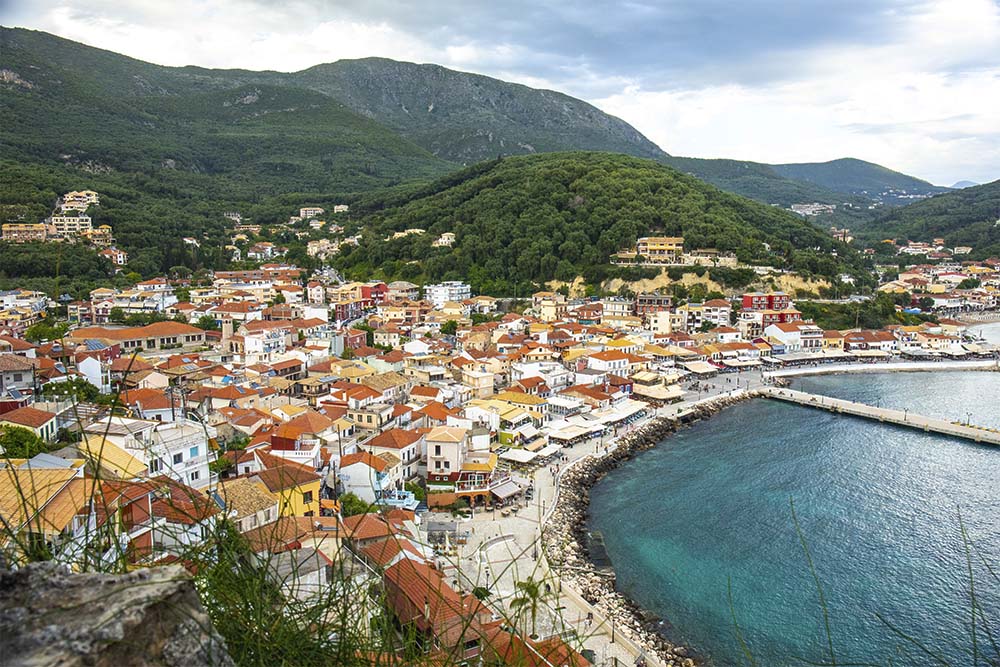Ionian Sea, Greece
- Home
- /
- Destinations
- /
- Mediterranean
- /
- Ionian Sea, Greece
Ionian Sea, Greece
OVERVIEW
The Ionian Islands, nestled in the Ionian Sea, constitute one of Greece’s thirteen regions. With new tourist infrastructure, a favorable climate, and breathtaking nature, they are an incredible attraction for visitors from around the world
TIPS
- The best months to visit are June and July
- Explore Zakynthos, a famous summer tourist destination, and its Solomos Square by the sea
- Discover the Nidri Waterfalls in Lefkada
ITINERARY (7 days)
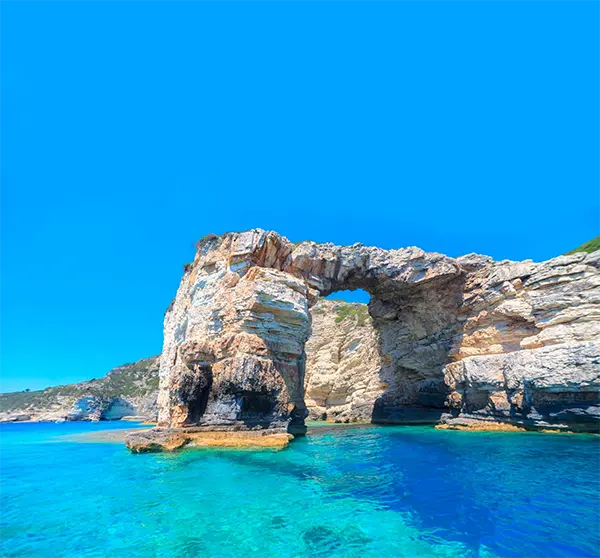
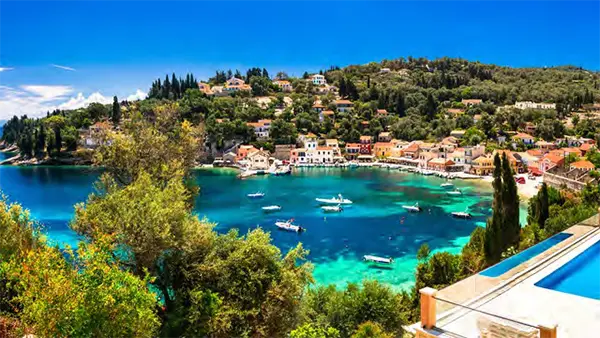
DAY 1 – Paxos & Antipaxos
Imagine caves bathed in their usual mystery. Caves to which is added a strange beauty as if from another world. Caves upon which mythology also hovers with its pulse between reality and fantasy. All this is found in Paxos, an unknown gem of Greece, precisely called the island of the blue caves.
This corner can only be accessed by boat, thankfully, photos do it complete justice. Because this landscape combines the intense turquoise of the waters with the white of the limestone rock, and this erosion has shaped a landscape worthy of divine worship: cliffs hundreds of meters high, rocky arches, and spectacular marine cavities known as blue caves. It may seem insignificant, but never has the sea been so blue, nor the cliffs so immaculate. And in this chromatic play of nature, with the complementary action of the sun, the reflection envelops the whole in a luminous atmosphere. Almost electric, almost unreal.
In the port of this island, there are small shops, bars, and restaurants to visit. Enjoy the thermal waters in the area, known for their relaxing and therapeutic properties.
You can also explore the small island of Antipaxos, which has three main beaches: Vrika (white sand), Mesovrika (pebbles), and Voutoumi.
This small island would fit into most definitions of paradise. A dense forest of mastic trees, pines, myrtles, and cypresses interspersed with vines covers it. It’s worth exploring if you can tear yourself away from its beaches.
DAY 2 – Ithaca
Your second day will take you to Ithaca, globally renowned for Homer’s Odyssey. Much of this small island is dedicated to its famous king, Odysseus. Ithaca isn’t known for nightlife but for its natural environment and surrounding beauty. If you wish to visit bars, Kioni village offers a great option for drinks.
Its beaches are small and charming, such as Jirimbi, Paliocáravo, Lucha, Yidaki, Kioni, Poli, and Amudaki. However, it’s worth noting that it’s not a sandy beach island but rather rocky, although some neighboring islands like Kefalonia boast Greece’s best beaches.
The capital, Ithaki or Vaci, sits on a closed bay and is a beautiful fishing village with the most traditional houses in the Ionian Islands. Visit the Marble or Nymphs Cave, with significant archaeological and mythological interest. Other recommended spots include Perajori and the Dormition Church, near the lovely Monastery of the Archangels. From the monastery, you can descend to the sea and find the most pleasant coves in the Ionian. One of the prettiest towns is Stavros, from where you can head to Polis port.
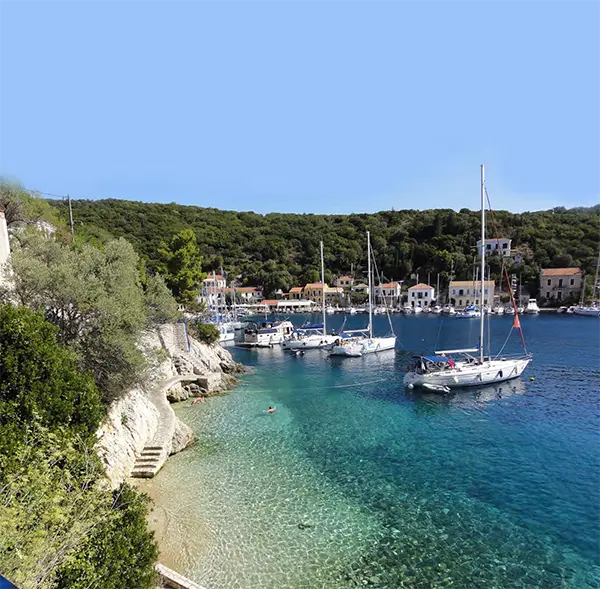

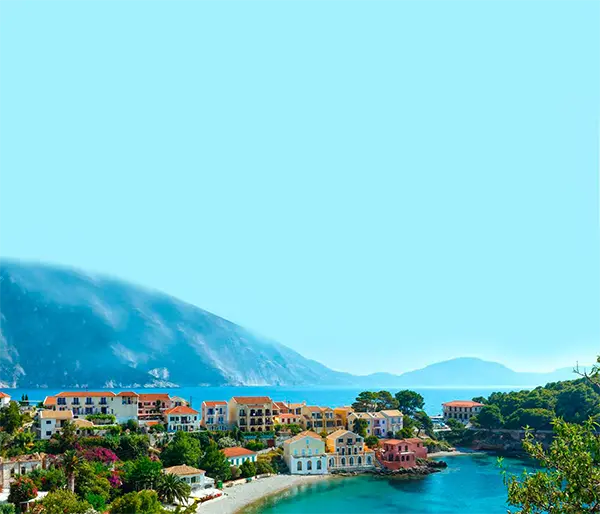
DAY 3 – Cefalonia
Your third day will begin by sailing the waters of Cephalonia, one of the seven largest islands in the Ionian group. Here, you’ll find the charming port of Fiskardo, one of the most beautiful, where you can disembark to explore shops and bars.
Continuing the journey around this island, you’ll come across Assos, a village near Cephalonia, where you can sample local cuisine and explore the fortress built in 1590. Another village worth visiting on this beautiful island is Agia Efimia, home to the Monastery of Our Lady Themata, which we recommend visiting.
Returning to the port of Fiskardo at dusk, you can enjoy its nightlife if you wish to have a good time before boarding again and spending the night in the marina.
DAY 4 – Lefkas
Lefkada or Lefkas is a Greek island in the Ionian Sea off the west coast of Greece, connected to the mainland by a long causeway and a floating bridge. The main town on the island and the seat of the municipality is Lefkada.
Lefkas Town is a fascinating place to explore, with its varied architecture (partly due to a series of earthquakes that necessitated its reconstruction). The urban layout is very distinctive and resembles a “fishbone spine.” There are picturesque alleyways, small squares, traditional houses, elaborate bell towers, and paved pedestrian areas that give this city its character. There are also many tavernas, shops, boutiques, and four museums. The Phonograph Museum is a must-visit.
The city is surrounded by a canal and a lagoon. To the north lies Agios Ioannis, a narrow strip of sandy beach with windmills and sparse vegetation. Further south, on the east coast, you’ll find quiet port towns where you can relax in an intimate seaside café and enjoy the scenery. Nidri is a major tourist port with lively nightlife.
Sivota is a must-visit for sailors. In this picturesque harbor, at the entrance of a lush green valley, you’ll find some of the best seafood tavernas in Lefkada.
Vasiliki is the windsurfing capital of the region. Sailing the waters of Lefkada, you may encounter the islands of Meganisi, Madouri, and Skorpios, owned by the late Aristotle Onassis’s family.
Scuba diving (organized tours only), horseback riding, golf, tennis, hiking, cycling, and many other activities are available on this island.
The myth about the suicide of Sappho at Cape Lefkada is related to other myths that link the island to the ancient Greek goddess of love, Aphrodite, and to Odysseus, the hero of Homer’s Odyssey.
Despite its small size, its glorious beaches, sophisticated capital, and easy access, Lefkada remains, along with tiny Ithaca, one of the most unspoiled destinations in the Ionian. The traditional village life, centered around the local kafenio (coffee), continues, almost unchanged for over a century.
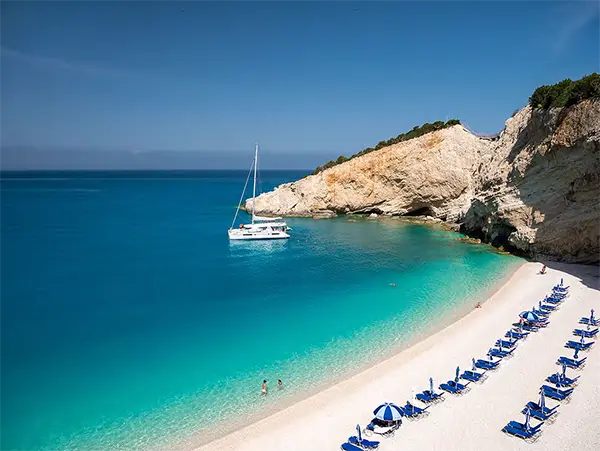
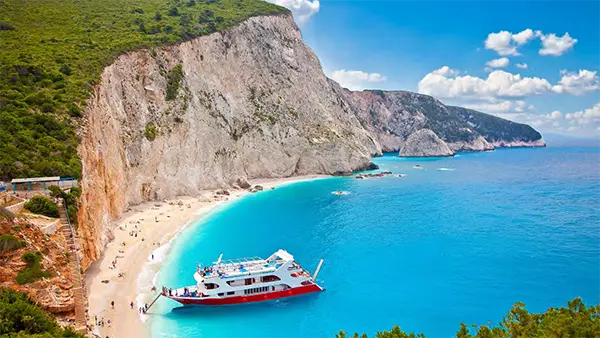
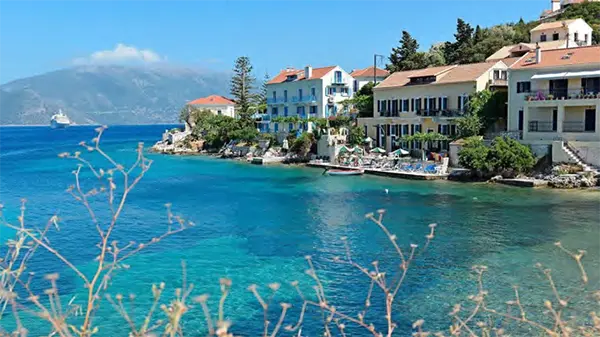
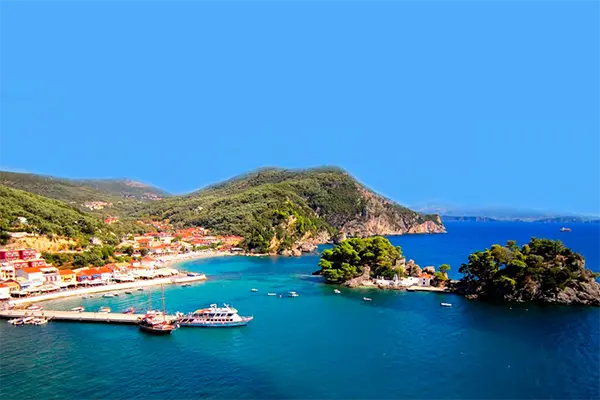
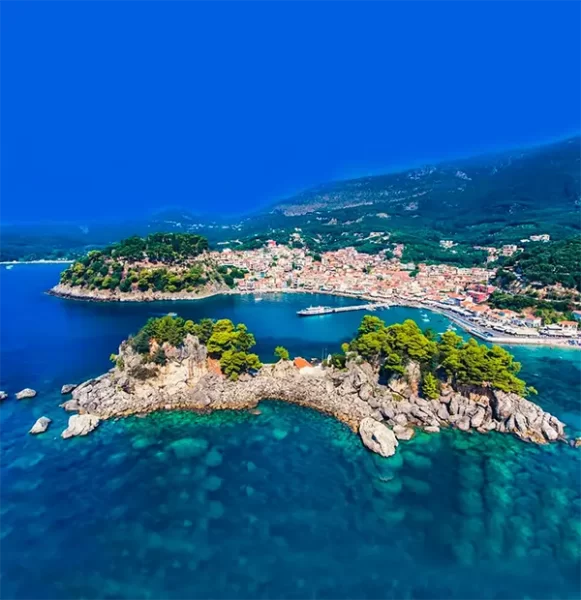
DAY 5 – Parga
Starting your fifth day aboard, you’ll sail towards the island of Parga through a strait in the bay. This tranquil and charming ride allows you to disembark and explore the village, its shops, and savor its local cuisine.
Parga, located in the northwest part of the Preveza regional unit in Epirus, northwestern Greece, is a tourist town known for its scenic beauty.
Perched on the northwest coast of Epirus overlooking the azure waters of the Ionian archipelago, captivating Parga and exotic Syvota form an irresistible pair with an island breeze and cosmopolitan aura that will surely steal your heart. Parga is built in an amphitheater shape in a picturesque bay, where the small wooded island of Panagia lies in the shadow of the city’s Venetian castle.
The castle sits atop a hill overlooking the city and was used to protect the city from both the mainland and the sea. Initially built in the 11th century by the residents of Parga to defend their city from pirates and Turks, it was rebuilt by the Venetians in the 13th century to fortify the area. In 1452, Parga and the castle were occupied by the Ottomans for two years, during which part of it was demolished. In 1537, Ottoman admiral Hayreddin Barbarossa burned and destroyed the fortress and houses within.
Take a stroll to the old town, where you’ll enjoy distinguished architecture, wander its cobbled streets with beautiful arches, discover flower-filled neighborhoods with picturesque cottages and colorful mansions. Finish by sipping from the Venetian walls with a mesmerizing sunset view over the emerald waters of the Ionian Sea. At dusk, stroll along the waterfront lined with tourist shops, beautiful restaurants, and small bars for drinks or dining with views of the illuminated castle and the islet of Panagia with its fine sand and olive grove backdrop.
DAY 6 – Corfú
As your journey nears its end, make the most of your last day by visiting the island of Corfu. Here, you’ll discover ancient fortresses and explore St. George’s Palace and the Esplanade, one of Greece’s most famous squares.
For a deeper dive into local culture, visit one of Corfu’s five museums. It’s a bustling tourist city with plenty of options to fill your time. Dive into the waters near the boat, spend the day on its beaches, play tennis or golf, or explore the island’s monasteries. Some tourists are so impressed with this incredible city that they decide to stay one more day before heading back.
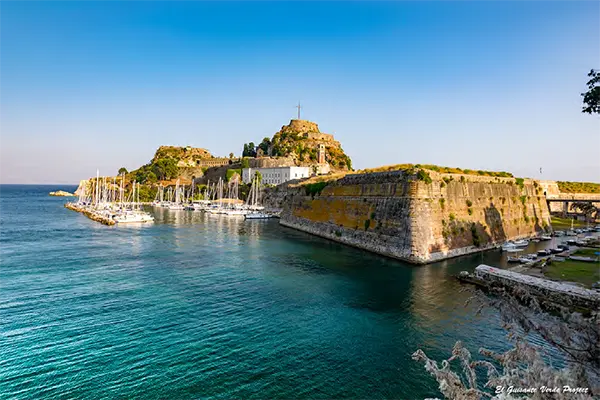

Maritimes conditions
General conditions
The Mediterranean enjoys an average of 315 clear days each year. During the popular season from April to October, blue skies and warm weather prevail. Midsummer offers long nights, glorious sunsets, gentle winds, and calm seas. Water temperature is around 62°F (17°C) in the low season and about 78°F (26°C) in the high season.
Historical weather
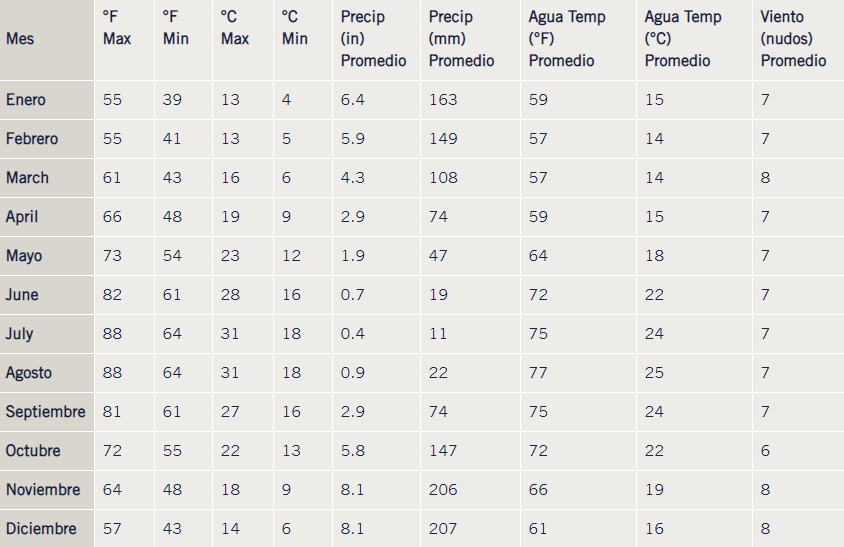
Tides
In the Eastern Mediterranean, the tidal range is very small: from 30 cm to 60 cm (one to two feet), including variations in level due to atmospheric pressure and prevailing winds.
Weather Forecast
Customers can obtain the weather situation at any time by listening to marine weather forecasts. Weather updates are provided every hour during severe conditions.
